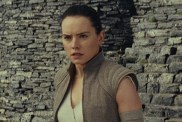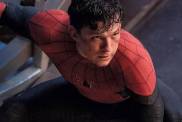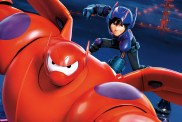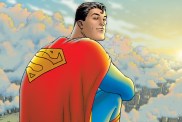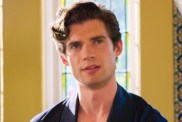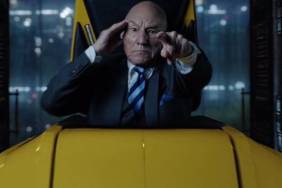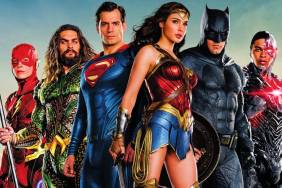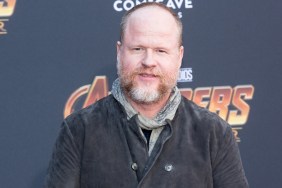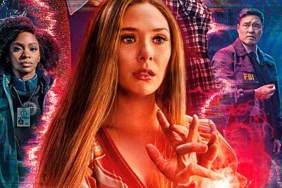
(Author’s note: Spencer’s Soapbox is a weekly column here on SHH where yours truly tries to spur a conversation on specific topics. Dive in to the latest installment below and check out the previous ones by clicking here.)
Warning: There are minor spoilers for Avengers: Age of Ultron.
In preparation for watching Avengers: Age of Ultron this week, I found myself revisiting the 2012 film, but not just the movie, I turned on Joss Whedon’s commentary track. As I listened to Joss make his self-deprecating jokes and wax philosophically about his process of filmmaking and choices he made, I was struck with something: Some of the things he was saying appeared to have also influenced this year’s sequel as well as directly contradict what we already knew about it. With that in mind, this is a different kind of Soapbox as I wanted to address some of the things Whedon mentioned that I felt he either followed through on or went against in “Age of Ultron.” The Avengers and Avengers: Age of Ultron are certainly different movies and this isn’t a “what one gets wrong about the other,” but more about how the foundation of the first is both built on and thrown away. Once again, there are some minor spoilers for “Age of Ultron.”
“I wanted to make a movie where being a superhero wasn’t a free pass.”
Certainly this was the overall theme of The Avengers, and though “Age of Ultron” itself has its own integral and unique themes, this carries over well into the sequel. Even more so than simply having powers “not being enough,” the characters in “Age of Ultron” are more often than not punished because of their abilities. It’s a smart twist on what he established as a ground layer in Avengers: Having super powers is just as much as curse as a blessing, and doing the right thing doesn’t always yield the most positive results.
“Every corner is filled with a bit of reality or bit of life… It’s easy when you’re playing in a foreign country to do something that feels generic or feels Hollywood or feels wrong.”
In relation to the first film, Whedon was referencing the sequences that were supposed to take place in other countries. Hands down “Age of Ultron” has an even more global presence than its predecessor and Whedon kept this to heart as sequences in Eastern Europe, South Africa, and South Korea all feel like their own locales and never a caricature of what people think these places look like. It also helps that in these situations, The Avengers do their best to consistently save innocent lives in addition to their mission, which adds even more life to the scales at work.
“I love to create fights, but my job wasn’t to create it, my job was to justify it. They knew they wanted them to fight, and there was some talk about ‘Well he could be under a spell or he could think he was a bad guy,’ and to me that was deadly, that was danger, and if you get these guys pummeling each other out of misapprehension then you’re just waiting for them to start talking, you’re just checking a box, and you don’t want that.”
Whedon mentions this during the Iron Man/Thor/Cap fight in the woods of The Avengers, and it directly contradicts one of the bigger set pieces of the film: The Hulk v Hulkbuster fight. With The Hulk under the spell of Scarlet Witch and that at least half of the movie still left to go, we know that Tony and Bruce are gonna be buddies after their bout. This isn’t to take away from the sequence either, because it plays out exactly how you’d want it, but by Joss’ sown admission it’s just a checked box for the film.
“What you want are two people of conflicting agendas, so what I ultimately came up with has been done in many cop movies, it gave each of them an excuse to believe they should have not just a fight, have a conflict… It’s enough of one that you’re feeling what’s going on and not just watching it.”
Continuing the dissection of his fight in the first film, this plays into another scene later in “Age of Ultron” where Tony and Steve find themselves at odds – imagine that with Captain America: Civil War on the horizon. This sequence in particular is not only an interesting brawl, but there are real stakes behind the outcome. It’s less punchy punchy and more “We really disagree on this and words won’t solve it.” It’s funny how one grand thought Whedon had about the first film was both followed to a T and totally thrown out in the sequel.
“I try not to write the line where the villain sets himself up.”
In the original film Whedon mentioned this because, as he notes, he hates the trope but he does it anyway with Loki; however, in “Age of Ultron” this is a twofer because it’s something that occurs and doesn’t occur. After Ultron has aligned himself with Scarlet Witch and Quicksilver, he mentions no less than twice what his plan is for recruiting Wanda among his ranks: tearing apart The Avengers. Later though as we enter the third act, Ultron never explicitly says his grand plan. As a whole it’s alluded to within his dialogue in very clever ways, but the character himself never outright says what he’s doing – instead Tony does.
“Fighting separately, coming together, fighting together, getting their heads handed to them, and eventually rising from the ashes.”
Since the first “Avengers” was all about the team coming together, and the second one is about them learning to keep working, it’s interesting how this formula is similarly applied. It’s not that they fight alone and come together, it’s that they already were fighting together but weren’t working as a team. They get the crap kicked out of them as a unit in one major set piece and by the time the next big one comes around, they’ve come to form as one big unit. As an arc for the team as a whole it really works, maybe even more so than in the first Avengers.
“I’m not proud of that either… It’s a device that I’m not fond of.”
Whedon mentions this regarding how all of the Chitauri just fall over in The Avengers after the portal closes up, which he calls the “Queen Bee” trope. This ventures on spoilerish territory, so I’ll just say he didn’t let it happen this time, a trade off for the “possessed fight” trope I suppose.
“Keep that man on the street perspective.”
Not only did Whedon make this a conscious choice for the first film, he made it a priority in the sequel. The sequel spends a lot of time with the team saving people and protecting lives, clearly a direct reaction to the Man of Steel backlash, and the characters are never at a point where they appear above everyone else. Even Captain America, whose arc in the film is arguably moving outside of his comfort zone to accept a leadership role he may not fully want, never transcends his regular-guy charm that has kept him afloat for the entire Marvel Cinematic Universe.
It’s not impossible for filmmakers to change their perspective on their own rules or beliefs of filmmaking, clearly they can, and Whedon is proof of that. Many of his cemented “rules” from the first movie are felt just as strongly in the sequel, but there are instances where you have to wonder, “Why’d you break your rule Joss?” There are a lot of plates spinning in “Age of Ultron,” and Whedon capably keeps most of them afloat, which is a tremendous achievement. In many ways, Avengers: Age of Ultron is the most pure “comic book” come to life via film, and a lot of that is due to Whedon’s sensibilities. Joss’s knowledge of comic and film tropes and his subversion of those tactics help enhance the spectacle and pace of these movies, but even the master falls for them everyone once in a while.

